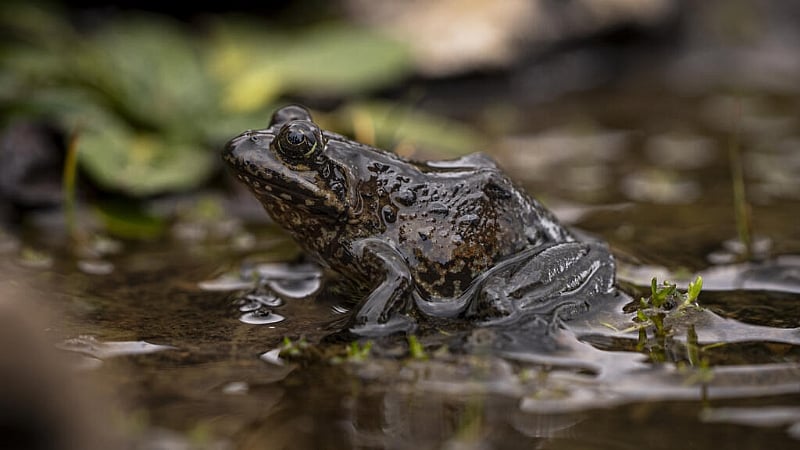The icy slopes of Mount Kilimanjaro, Africa’s highest peak, have yielded an unexpected surprise: a population of river frogs thriving at an altitude of over 4,000 meters. This unprecedented discovery, made by local guides during a recreational hike, has ignited both excitement and concern within the scientific community. The frog, identified as Amietia wittei, was previously known to inhabit lower altitudes, making its presence on Kilimanjaro’s high-altitude plateau a significant finding. This discovery highlights the remarkable adaptability of alpine wildlife and underscores the potential for further undiscovered biodiversity in these unique ecosystems, while simultaneously raising questions about the impact of climate change on these fragile environments.
The serendipitous encounter occurred during an expedition led by Dmitry Andreichuk, co-founder of Altezza Travel agency. Initially focused on observing the scarlet-tufted malachite sunbird, a high-altitude bird species, Andreichuk stumbled upon the frogs while descending a slope near the Shira plateau. Witnessing the amphibians leaping into a shallow stream, he immediately recognized the unusual nature of the sighting. After a period of careful observation and confirmation with his brother, they realized they had encountered Amietia wittei in an environment far surpassing its previously documented range. This chance discovery underscores the value of even casual observation in uncovering new ecological insights and emphasizes the potential for further exploration and study within seemingly well-trodden environments.
The presence of Amietia wittei at such a high altitude, in an environment where even short exposure to the icy water is bone-chilling, is a testament to its extraordinary adaptability. The frogs, along with their tadpoles, were observed to thrive in the small, frigid streams of the Shira plateau. This ability to tolerate extreme cold is attributed to their slow metabolism, allowing them to survive in icy waters, sometimes even under a layer of surface ice. This adaptation, honed over millions of years, underscores the remarkable resilience of these creatures and raises questions about the limits of their adaptability in the face of ongoing climate change.
Expert analysis by Professor Alan Channing, an amphibian specialist, confirmed the identity of the frogs and highlighted the significance of the discovery. Amietia wittei has been documented in other high-altitude locations in East Africa, but never at such an elevation. This upward migration is likely driven by the warming climate, forcing the frogs to seek cooler habitats at higher altitudes. While the vast expanse of Kilimanjaro offers some room for this upward movement, the situation is more precarious for related species on lower mountains, where suitable habitats are more limited. This raises concerns about the long-term survival prospects of these species as temperatures continue to rise and suitable habitats shrink.
The discovery of Amietia wittei on Kilimanjaro’s high slopes has sparked a flurry of scientific interest and plans for further research. A 45-day expedition is being organized to study these high-altitude frogs, aiming to understand their unique adaptations and assess their vulnerability to ongoing climate change. This research will be crucial in informing conservation efforts and predicting the future of these remarkable amphibians in the face of a changing world. The findings could also shed light on the broader impacts of climate change on alpine ecosystems and the adaptive strategies of other high-altitude species facing similar environmental pressures.
This unexpected discovery serves as a potent reminder of the hidden biodiversity yet to be uncovered and the significant role even amateur naturalists can play in scientific discovery. It also highlights the interconnectedness of life on Earth and the far-reaching impacts of climate change, even in the most remote and seemingly pristine environments. The Amietia wittei frogs of Kilimanjaro represent a compelling case study in adaptation, resilience, and the urgent need for conservation efforts in a rapidly changing world. Their fate, like that of countless other species, hangs in the balance, dependent on our collective efforts to mitigate climate change and protect the fragile ecosystems they call home.














